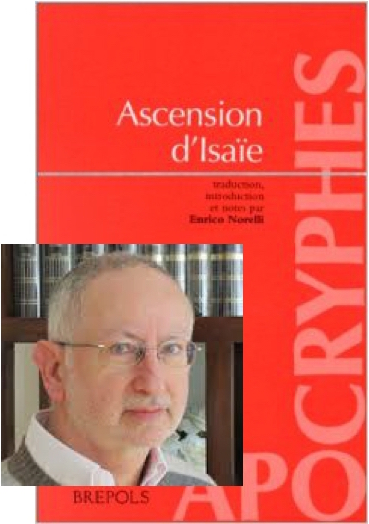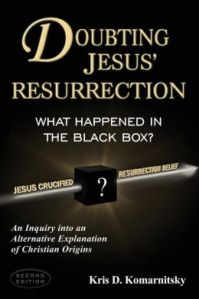A spirit of obsession these past few days has possessed me with an intent to find something good and positive among mainstream biblical scholars of the historical Jesus and Christian origins. I fear I have proven to be a leaky and soon sunk vessel. All I discovered this past week was a post titled Revision and Dispute on the Critical Realism and the New Testament blog. I admit I was a little worried about opening and reading the post given my experience with a handful of other posts from the same author. But let bygones be bygones and focus on what we have in the here and now.
To begin:
In the opening paragraph the author directly compares (and I hope I am not misstating or misleading in any way) that the strength of evidence for the historical existence of Jesus lies in the same bracket of probability (that is, certainty) as the historicity of Germany’s invasion of Poland in 1939.
The author goes so far as to imply that anyone who doubts the historicity of Jesus is operating at a level equivalent to someone who would declare all the evidence for Germany’s invasion of Poland has been falsified.
Surely you jest. . . .
No, no, I am serious. But please let me continue. Please hear me out.
The same scholar (I believe he is a scholar, he says lots of things that indicate he is a real scholar) wrote
The recent resurgence in arguments for Jesus’ historical non-existence rested entirely upon the argument that there had emerged new insights into old evidence.
What “recent resurgence” did he mean?
He did not say. But I can only think he is talking about Richard Carrier. But that’s getting on a bit, isn’t it? Earl Doherty (an acknowledged inspirations of both Carrier and Price) took up the mantle from G. A. Wells, and before him we had P.L. Couchoud and, who knows ….. I don’t know what or who he means. He doesn’t say. But just from reading his post one would think that he is unaware of any mythicist publications until “recently”. He seems to suggest that Jesus mythicism has simply popped up “recently” from nowhere. So it is all very confusing.
Sigh. But surely there must be a smidgen of academic advance since the nineteenth and twentieth centuries.
No, no, not at all. The Critically Real Blogger says that
those competent in the matter and fully familiar with the evidence recognized immediately that these were not new insights at all but almost without exception insights that had been advanced and rejected the better part of a century ago.
You cannot be serious!! Sorry… I let reality sway my impulses for a moment. I mean, ….. Yes, yes, I know what you mean. Sigh.
Okay. Where do we go from here? Let’s think.
I suppose we could call on him to produce the citations that will lead us to where all of those competent had known and debunked all of those puerile mythicist myths long ago, even as far back as the eighteenth century. Surely!
Of course he will say he is too busy and flick us off to look for ourselves. The only problem, of course, is that we have looked at all of those rebuttals and see that they are for most part non sequiturs or worse.
So then he will tell us to look more closely and when we do we return to say that none of the initial arguments have been addressed. All the words that we read have to do with apologetics and non sequiturs and other fallacies.
Can I ask something here? Haven’t we, on Vridar, lately posted two series of critical reviews of mythicism that have appeared in the Journal for the Historical Study of Jesus?
Yes.
Do you think that that is part of the problem?
What do you mean?
Do you think our blogger is simply up in arms against those who do not submit to the good sense of his intellect?
How so? Surely, if our blogger is a genuine intellectual, and he surely is, then he will see from what we have written that we address nothing but the plain facts. We set out the plain facts of what the scholarly reviewer (whether Gullotta or Gathercole) says and side by side we place those words with what the reviewed target (Doherty or Carrier) says, and judge for ourselves the honesty of the review.
Yes, but I don’t think they see it that way. I think they want to portray any of us who questions the historicity of Jesus as idiots. Full stop. The want to reassure every faithful Jesus believer that they are on the side of “sanity”.
I am tiring of this post. I have been here too often before. SOME (NOT ALL BUT WAY TOO MANY) historical Jesus scholars really have no idea about the most fundamental principles of historical methods outside their cherished field of God and theology and divinity and faith and all that.
To cut to the chase:
I state here that every event that historians (setting theologians and divinity doctors aside for a moment) claim to be a bedrock fact can be found to be grounded in contemporary evidence, that is, evidence contemporary to the person under discussion, or to evidence that can be shown to have derived from contemporary evidence.
There is NO such evidence for Jesus. There IS such evidence for Socrates, for Cicero’s slave, and for Seneca’s philosophical rivals (figures with even less claim than Jesus to being significant enough to enter the historical record) who are otherwise lost from history.
Biblical scholars who write posts like Revision and Dispute demonstrate each time that they write that they have no inkling of how vast is the gulf between what they call history (something that opens visions of persons and worlds otherwise hidden behind texts) and what historians, real historians without any theological baggage, call history.
Finis
Like this:
Like Loading...





 On the other hand, some questions are more pressing. Even not making a decision is still a decision. When I think of life-or-death decisions that demand a choice, I can’t help but recall the series
On the other hand, some questions are more pressing. Even not making a decision is still a decision. When I think of life-or-death decisions that demand a choice, I can’t help but recall the series 